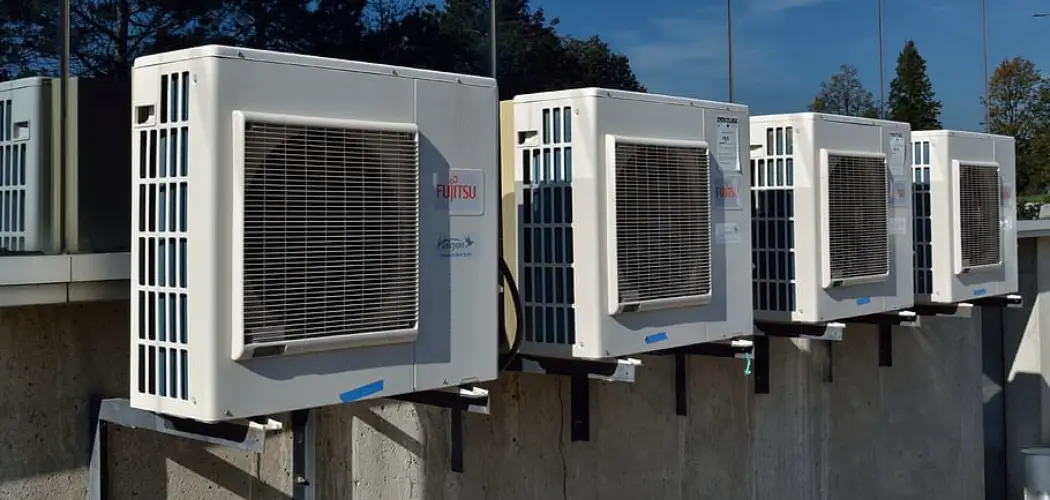Do you feel like your air conditioner is not providing enough cooling comfort in this hot summer season? You might be shocked to know that the cooling capacity of an air conditioning unit usually decreases over time, leading to poor performance and a lack of efficiency.
But don’t worry—there are several steps you can take to increase the cooling power of your air conditioner so you can stay cool even on the hottest days! In this blog post, we’ll show you easy ways to boost your AC’s cooling capacity at home and make sure it operates as efficiently as possible.
So, read along for tips on how to increase cooling capacity of air conditioners.
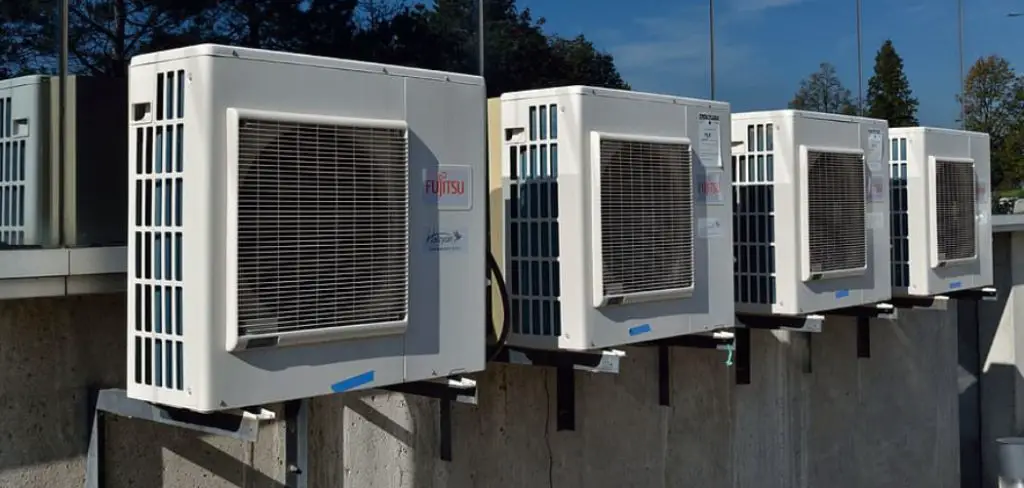
Can You Increase the Cooling Capacity of The Air Conditioner?
Air conditioners are a lifesaver when it comes to finding relief from heat and humidity. However, as the summer months roll in, you may notice that your AC unit isn’t keeping up with demand like it used to. Is there a way to increase its cooling capacity? The answer is yes, but the approach you take will depend on factors such as the age of your unit, its size, the layout of your space, and the climate you live in.
From simple enhancements like cleaning or replacing the air filter to upgrading to a higher SEER rating, there are a variety of ways to increase your AC’s cooling power. With a little research and investment, you can enjoy a more comfortable and refreshing home all summer long.
Why Should You Increase the Cooling Capacity of The Air Conditioner?
Are you tired of feeling hot and uncomfortable during the summer months? Increasing the cooling capacity of your air conditioner may be the solution you’ve been searching for. By upgrading your unit, you’ll be able to enjoy a cooler and more comfortable living space while also reducing humidity levels.
Not only this but increasing your cooling capacity can also improve the indoor air quality of your home. With a more powerful air conditioner, you’ll be able to filter out dust, pollen, and other impurities more effectively. Overall, investing in increasing the cooling capacity of your air conditioner can not only make your living space more comfortable but also contribute to your overall health and well-being.
Signs of Insufficient Cooling Capacity
As a homeowner, it’s important to be aware of the telltale signs indicating your air conditioner’s cooling capacity might be insufficient. Here are some common signs you should look out for:
- Inconsistent Temperature Control: One of the most obvious signs that your air conditioner’s cooling capacity might be lacking is inconsistent temperatures throughout your home. You might notice some rooms are significantly cooler than others, or the AC may struggle to reach the temperature set on the thermostat. This inconsistency can be an indicator that the unit is struggling to cool your home effectively.
- Increased Energy Bills: A sudden surge in your energy bills might be a clear sign that your air conditioner is working harder than usual to try to cool your home. An underpowered AC unit will run longer and use more energy to achieve the desired temperature, leading to an unnecessary increase in energy consumption and higher bills.
- Excessive Running Time: If your air conditioner runs constantly or cycles on and off more frequently than normal, this could indicate an issue with its cooling capacity. An efficient AC should be able to cool your home effectively without running continuously. Excessive running time can indicate that the unit is struggling to maintain a comfortable temperature.
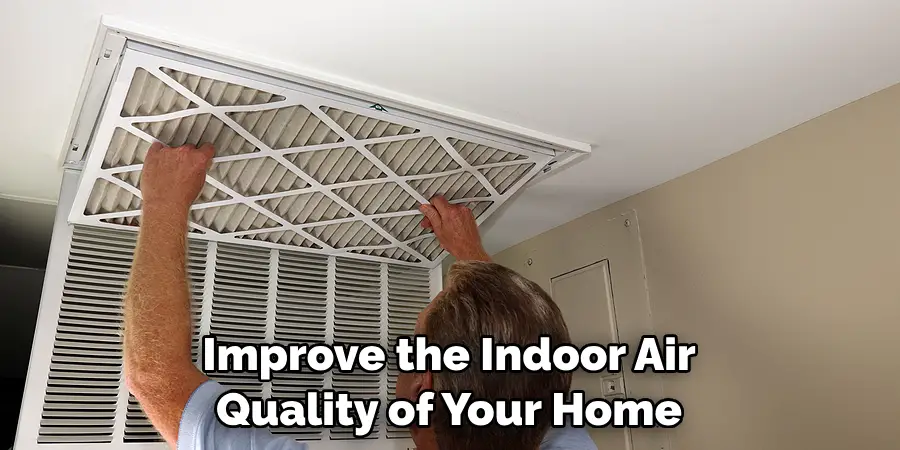
How to Increase Cooling Capacity of Air Conditioner: A Comprehensive Guide
1. Install a Programmable Thermostat
One of the simplest ways to increase the cooling capacity of your air conditioner is to install a programmable thermostat. This will allow you to set the temperature in your home to a comfortable level when you are present and adjust the temperature higher when you are out of the house.
This reduces the burden on your air conditioner, increasing its efficiency and lowering your energy bills. Some modern thermostats can also be connected to your smartphone, allowing you to monitor and adjust the temperature remotely.
2. Clean or Replace Your Air Filter
A clogged air filter can significantly reduce the efficiency of your air conditioner. A dirty filter restricts airflow, which forces the unit to work harder. This puts unnecessary strain on the unit and can cause it to fail prematurely. To avoid this, it is recommended that you clean or replace your air filter at the start of each cooling season and once a month during its use. This can drastically increase your air conditioner’s cooling capacity, airflow, and overall efficiency.
3. Schedule Regular Maintenance
Regular air conditioner maintenance is key to keeping it running efficiently and increasing its cooling capacity. A professional technician can clean the coils, lubricate the motor, check refrigerant levels, and ensure all electrical connections are secure. Regular maintenance ensures that your air conditioner operates at peak performance and can save you money in the long run by avoiding costly repairs.
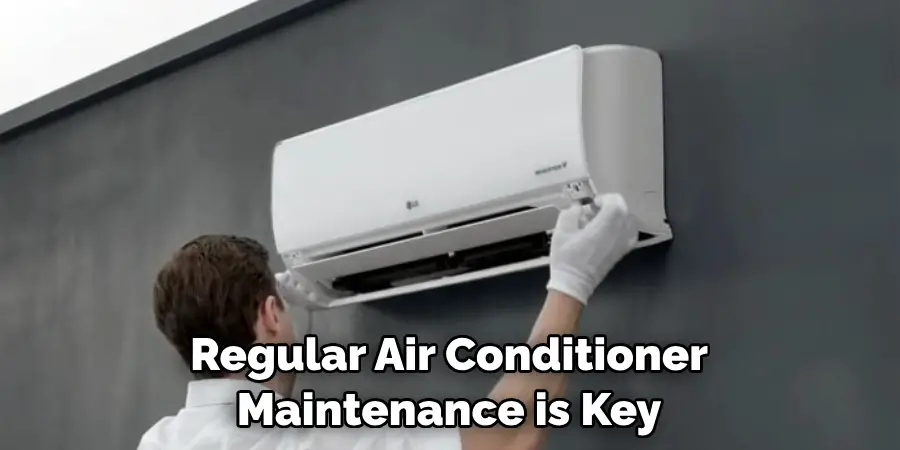
4. Upgrade to a More Efficient Unit
If your air conditioner is old and inefficient, upgrading to a more efficient unit is a great way to increase its cooling capacity. Newer units are designed to be more efficient, reducing the amount of energy required to cool your home. This can result in significant savings on your energy bills and improve your home’s overall comfort. A professional technician can help you choose an air conditioner that is the right size and efficiency level for your specific needs.
5. Increase Air Circulation
Improving air circulation can also help increase the cooling capacity of your air conditioner. You can do this by installing fans in certain areas of the home or using ceiling fans to help circulate air. Additionally, closing blinds or curtains during the day can help limit the amount of sunlight and heat entering your home. This reduces the strain on your air conditioner, making it easier for the unit to cool your home.
6. Invest in Insulation
Investing in insulation is a great way to increase the efficiency of your air conditioner. Poor insulation can cause heat to enter through the walls and attic, making it difficult for your air conditioner to cool your home. Adding insulation to these areas helps keep heat out, reducing strain on your unit and increasing its cooling capacity.
7. Plant Trees Around Your Home
Planting trees around your home is a great way to reduce the heat in your area without having to rely on air conditioning alone. Shade trees planted near windows and other areas of direct sunlight can help keep temperatures down, reducing the need for your air conditioner to work as hard.

That’s it! You’ve now learned seven ways to increase your air conditioner’s cooling capacity. Implement one or all of these suggestions to keep your home comfortable, and energy costs low. Good luck!
5 Things You Need to Know Before Increase Cooling Capacity of Air Conditioner
1. The first thing you need to know before increasing your air conditioner’s cooling capacity is your unit’s size. Air conditioners are available in a variety of sizes, and the size of your unit will determine how much cooling capacity it has. If you have a small air conditioner, you cannot increase its cooling capacity by very much.
2. The second thing you need to know is what type of air conditioner you have. There are two main types of air conditioners: central air conditioners and window units. Central air conditioners are much larger than window units and can cool a whole house or apartment. Window units can only cool one room at a time.
3. The third thing you need to know is the efficiency of your air conditioner. The efficiency of an air conditioner is measured by its SEER rating. The higher the SEER rating, the more efficient the air conditioner. When you are looking for an air conditioner, make sure to find one with a high SEER rating so that you can save money on your energy bills.
4. The fourth thing you need to know is how much cooling capacity you need. This will depend on the room size or area you want to cool. If you only want to cool a small room, then you won’t need as much cooling capacity as someone who wants to cool a large room or house.
5. The fifth and final thing you need to know before increasing the cooling capacity of your air conditioner is what kind of climate you live in. If you live in a hot climate, you will need a more powerful air conditioner than someone living in a cooler climate. Make sure to consider your climate when choosing an air conditioner so that you get one that is powerful enough to keep you comfortable during the hottest days of summer.
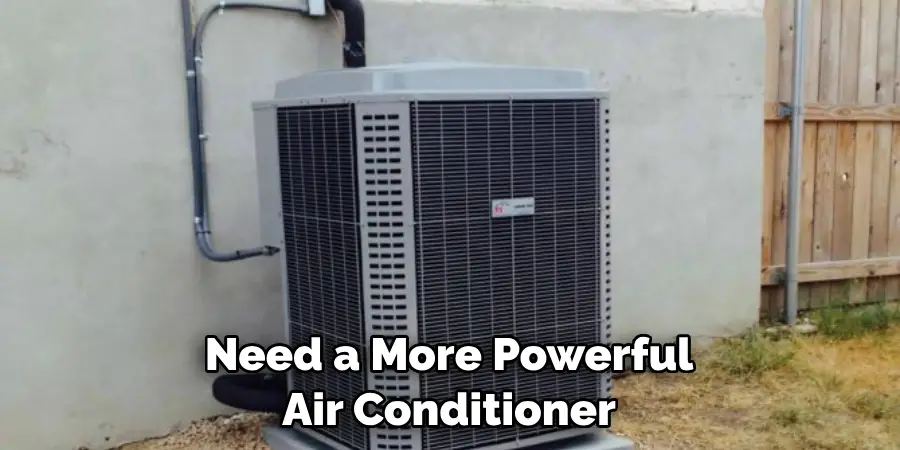
By understanding these five things, you will be able to choose the best air conditioner for your needs and increase the cooling capacity of it accordingly.
With a little bit of research and knowledge, you can ensure that your air conditioner is powerful enough to keep your home comfortable.
Benefits of Increase Cooling Capacity of Air Conditioners
As temperatures start to soar, there’s nothing more satisfying than stepping into a cool and comfortable space. Air conditioners are our best friends during the summers, especially in places where the temperature seems to hit new highs every year. Imagine if your air conditioner broke down or couldn’t combat the heat wave- dreadful, right?
However, what if we told you that increasing the cooling capacity of your air conditioners can leave you more satisfied and content with your purchase? Not only does it provide better and faster cooling, but it can also save energy bills, making it a cost-effective solution in the long run.
All you have to do is replace your existing air conditioner with one with a higher Cooling Capacity. Trust us, it’s a game-changer!
Some Common Mistakes People Make When Trying to Increase Cooling Capacity of Air Conditioners
In the hotter months, everyone desires a cool and refreshing indoor environment. However, some people make the mistake of trying to increase the cooling capacity of their air conditioner without first doing their research. One common mistake is assuming that a bigger air conditioner will deliver better results. However, this is not necessarily true, as an oversized AC unit can result in higher energy bills and inadequate moisture control.
Another mistake is ignoring maintenance and cleaning requirements, such as changing air filters regularly. Neglecting these tasks will reduce the system’s efficiency and increase cooling costs. Lastly, some people turn down the thermostat to an extremely low temperature to cool the space faster. This increases energy consumption and causes unnecessary wear and tear on the AC unit. In short, it’s important to avoid these common mistakes when trying to increase the cooling capacity of your AC unit in order to achieve both comfort and cost-efficiency.
Innovative Ways to Keep Your Home Cool Without Increasing Your AC’s Cooling Capacity
Innovative Ways to Keep Your Home Cool Without Increasing Your AC’s Cooling Capacity
- Utilize Natural Ventilation: During cooler hours, notably early morning or late evening, open your windows to allow the cool air to circulate throughout your home. This natural ventilation can significantly reduce indoor temperatures without relying on your AC.
- Use Energy-Efficient Curtains: Light-colored, energy-efficient curtains or blinds can reflect heat away, helping to keep your rooms cooler.
- Install Ceiling Fans: Ceiling fans can produce a ‘wind-chill effect,’ making the room feel cooler than it actually is. They use considerably less energy than an air conditioner.
- Reduce Appliance Usage: Appliances generate heat when in use. Reducing their usage, especially during peak heat times, can help keep your home cooler.
- Keep Doors Closed: Close off unused rooms to prevent cool air from permeating these areas and concentrate on the coolness where it is needed the most.
- Hydrate Your House: If it’s particularly dry, a bit of moisture can make the air feel cooler. Consider using a humidifier or placing a shallow bowl of water in the room.
- Plant More Greenery: Plants absorb heat and emit oxygen, which can help cool your home. Consider adding some indoor plants or, if space permits, planting trees outside your home to provide more shade.
By implementing these strategies, you can keep your home cool and comfortable without overworking your air conditioner, leading to energy and cost efficiency.
Conserving Energy When Operating an Air Conditioning Unit
There are several strategies that can be used to reduce unnecessary energy usage when operating an AC unit:
- Use a Programmable Thermostat: With a programmable thermostat, you can set your AC to cool down your home right before you come back from work or a day out, rather than leaving it running all day.
- Regular Maintenance: Regular maintenance and changing of filters can help your AC unit run more efficiently, thereby reducing energy consumption.
- Insulate Your Home: Proper insulation can keep the cool air inside your home and the hot air out. This means your AC unit won’t have to work as hard to cool down your home.
- Use a Fan: Fans use considerably less energy than AC units and can help circulate the cool air generated by the AC unit around your room, making it feel cooler.
- Avoid Heat Build-up: Try to avoid activities that generate a lot of heat, such as cooking or using electronic devices, during the hottest part of the day.
- Seal Leaks: Make sure to seal any leaks in your home where cool air can escape and hot air can enter. This includes gaps around doors, windows, and other openings.
By implementing these methods, you can maximize the efficiency of your air conditioner, reduce energy usage, and save money on your energy bills.
Additional Tips for Improving Cooling Efficiency
1. Keep your AC Unit Clean:
Make sure to clean the outdoor condenser unit regularly, as dirt and debris can clog it up, making it work harder than necessary.
2. Consider Upgrading to a Smart Thermostat:
A smart thermostat can help you learn your habits and adjust your cooling accordingly, leading to increased energy efficiency.
3. Use Zoning Systems:
A zoning system can allow you to cool only the rooms that are occupied, reducing unnecessary cooling and energy usage.
4. Utilize Proper Airflow:
Make sure furniture or other objects are not blocking your AC’s airflow, as this can restrict its ability to cool efficiently.
5. Go for Energy Star Certified Units:
When purchasing a new AC unit, choose an Energy Star-certified one. These units are designed to be more energy-efficient and can save you money in the long run.
By implementing these additional tips, you can further improve the cooling efficiency of your air conditioner and make it more cost-effective.
Exploring Alternative Cooling Methods
While air conditioners are standard in many homes, a variety of alternative cooling methods exist that are not only efficient but also eco-friendly.
1. Evaporative Cooling Systems:
Also known as swamp coolers, evaporative cooling systems operate by exploiting the principles of evaporation. As water evaporates, it absorbs heat from the surrounding air, resulting in a drop in temperature. These systems are most effective in hot, dry climates where the relative humidity is low. They consume less energy than traditional AC units and also add moisture to the air, which can be beneficial in arid environments.
2. Geothermal Cooling:
Geothermal cooling systems use the earth’s stable underground temperature to cool and heat your home. These systems circulate liquid through pipes buried in the ground, transferring heat between your house and the earth. This process can significantly reduce energy consumption and promote sustainability. Additionally, geothermal systems have a long lifespan and generate less noise than traditional cooling methods.
By exploring these alternative cooling solutions, you can find a system that not only keeps your home comfortable but also aligns with your energy consumption and environmental impact goals.
The Impact of Climate Change on the Need for Better Cooling Efficiency
As the realities of climate change set in, with temperatures steadily rising and summers becoming increasingly hotter, the demand for efficient cooling systems has escalated. The relentless heat is driving the need for air conditioning units, particularly in regions that were previously characterized by moderate temperatures. Consequently, energy consumption has skyrocketed, contributing to elevated greenhouse gas emissions – a vicious cycle intensifying global warming.
However, we can break this cycle by adopting more energy-efficient cooling solutions, thereby reducing our carbon footprint. Prioritizing regular maintenance can ensure our cooling systems operate at peak efficiency, minimizing energy waste. Further, upgrading to energy-efficient models, preferably those with an Energy Star certification, can result in significant energy savings. The integration of smart thermostats and zoning systems also accelerates energy conservation by optimizing cooling according to our habits and occupying patterns.
Another measure involves improving the energy efficiency of our homes themselves. This could include actions such as bolstering insulation, sealing leaks, and positioning of the house to maximize natural ventilation and shade. Implementing such measures can drastically reduce our reliance on artificial cooling technologies, helping us to stay cool and combat climate change simultaneously.
In essence, with global warming altering our climate, it’s imperative to adapt our cooling strategies. Implementing energy-efficient methods not only fulfills our cooling needs but also contributes to the broader fight against climate change.
Conclusion
By following these tips, you can increase your air conditioner’s cooling capacity and efficiency, making your home a comfortable place to escape from the heat this summer. Remember to install a programmable thermostat, regularly clean or replace your air filter, schedule regular maintenance, upgrade to a more efficient unit, and increase air circulation.
By incorporating these tactics into your cooling routine, you can significantly decrease your energy bills while also ensuring that your air conditioner performs at its best. Thanks for reading our post about how to increase the cooling capacity of air conditioner.

